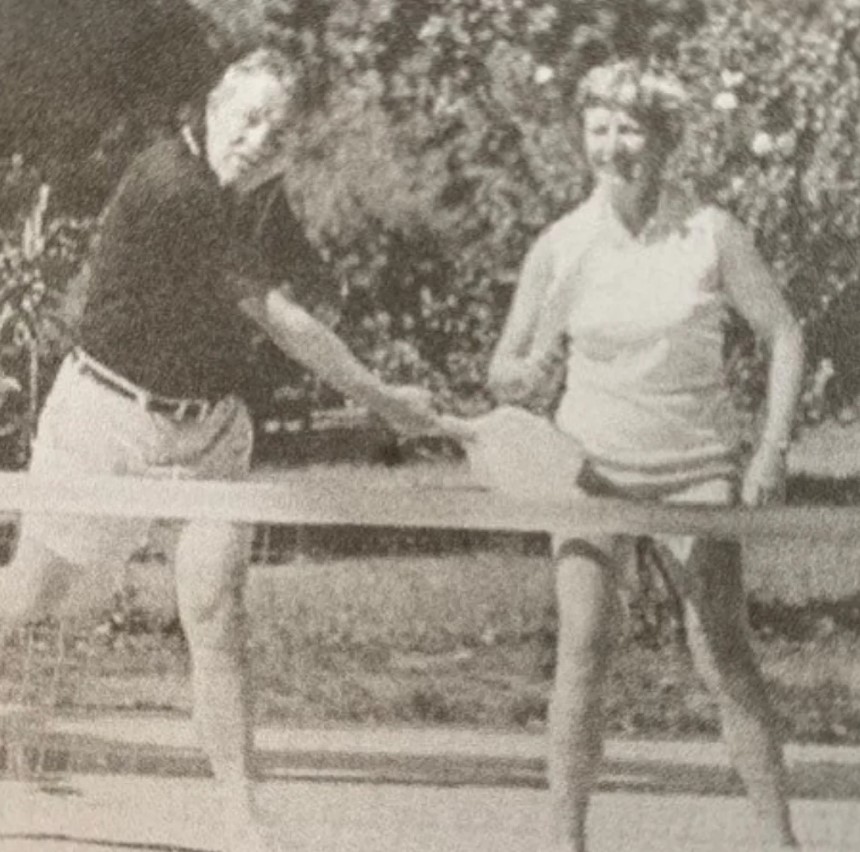Pickleball, a unique and rapidly growing sport, combines elements of tennis, badminton, and table tennis. It is played on a smaller court with a perforated plastic ball and paddles. Despite its relatively recent rise to global popularity, the history of pickleball is a fascinating story of creativity and adaptability, dating back to the mid-20th century.
Origins of Pickleball
Pickleball was invented in the summer of 1965 on Bainbridge Island, Washington, USA. It all began when Joel Pritchard, a congressman, and Bill Bell, a businessman, were looking for an activity to entertain their families. They found an old badminton court but lacked the necessary equipment. Improvising, they used table tennis paddles and a perforated plastic ball. Over time, they developed rules to make the game more dynamic and accessible, incorporating elements from different racquet sports.
In the early days, the net was set at badminton height (60 inches), but it was later lowered to 36 inches at the sidelines to accommodate the game’s specific needs. The focus was on creating a sport that people of all ages and skill levels could enjoy, fostering both competition and camaraderie.

How Pickleball Got Its Name
The origin of the name “pickleball” is a subject of much debate. According to Joan Pritchard, Joel Pritchard’s wife, the name came from the term “pickle boat,” which refers to the last boat to return with its catch in a rowing crew. She felt the game was a mix of borrowed elements, much like a pickle boat crew. However, another popular story suggests the name came from the Pritchards’ dog, Pickles, who enjoyed chasing the ball. Regardless of its exact origin, the whimsical name contributed to the sport’s charm and appeal.
What Year Was Pickleball Invented?
Pickleball was invented in 1965 on Bainbridge Island, Washington. It was during this year that Joel Pritchard, Bill Bell, and later Barney McCallum devised the game as a way to entertain their families during the summer. Using a mix of equipment and ideas from other sports, they laid the foundation for what would become a globally loved pastime.
This specific year is crucial in the sport’s history, marking the beginning of its journey from a backyard invention to an internationally recognized game. Today, 1965 is celebrated as the birth year of pickleball, a sport that continues to grow and thrive worldwide.
Growth and Development
During the late 1960s and early 1970s, pickleball began spreading beyond Bainbridge Island. Friends and neighbors who played the game introduced it to their communities, and its popularity gradually expanded across the United States.
In 1972, the first permanent pickleball court was constructed in the backyard of Barney McCallum, one of the sport’s co-creators. Around this time, rules were formalized, ensuring consistency and paving the way for organized play.
The formation of the USA Pickleball Association (USAPA) in 1984 marked a significant milestone in the sport’s history. The organization aimed to promote pickleball and standardize its rules. The first rulebook was published the same year, providing a framework for tournaments and leagues.
Global Expansion
By the 21st century, pickleball had grown from a backyard pastime to a global sport. Its accessibility and versatility made it appealing to players of all ages, particularly among seniors looking for a low-impact alternative to tennis. The sport spread internationally, with pickleball organizations emerging in Canada, Europe, Asia, and Australia.
Pickleball’s inclusion in major sporting events and its recognition by international sports organizations further solidified its global presence. The development of professional pickleball leagues and televised tournaments in the 2010s brought the sport to a wider audience.
Modern Popularity
Today, pickleball is one of the fastest-growing sports in the world. Its appeal lies in its simplicity, social nature, and adaptability. Whether played recreationally or competitively, it offers a fun and engaging experience for players of all skill levels.
Courts are popping up in community centers, schools, and sports clubs worldwide, and the sport continues to gain traction among younger players. In 2021, pickleball was named the fastest-growing sport in the United States for the second consecutive year, reflecting its ever-expanding fanbase.
Conclusion
From its humble beginnings on Bainbridge Island to its status as a global phenomenon, pickleball’s journey is a testament to the power of creativity and community. As the sport continues to evolve, it retains its original spirit: a game that brings people together, fosters joy, and bridges generations. Whether you’re a seasoned player or a curious beginner, the history of pickleball serves as an inspiring reminder of how a simple idea can spark a worldwide movement.
